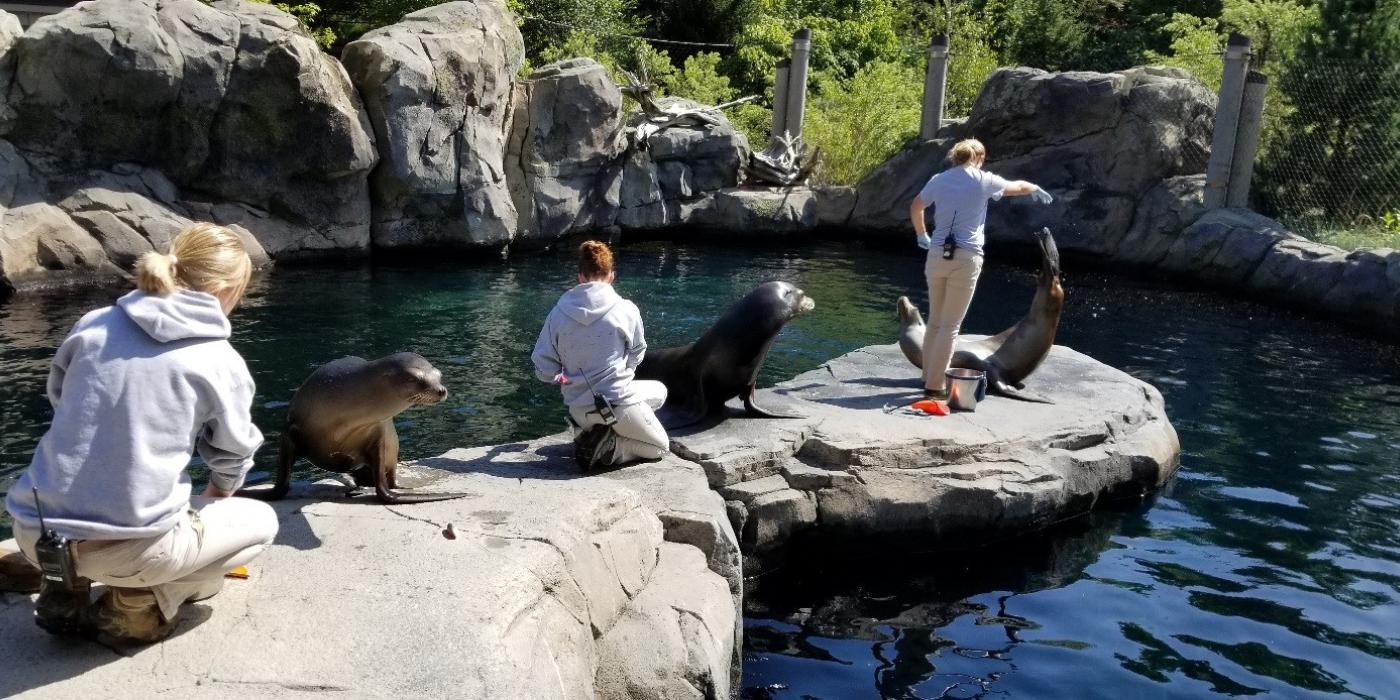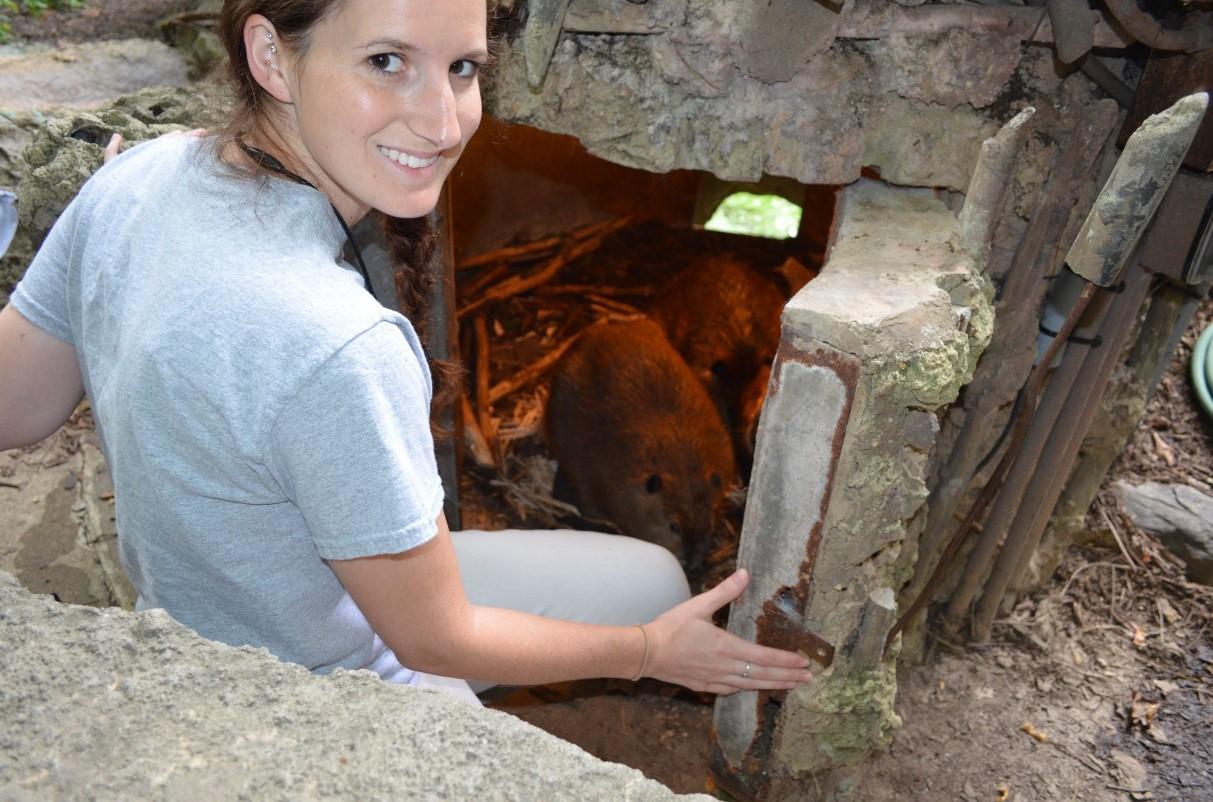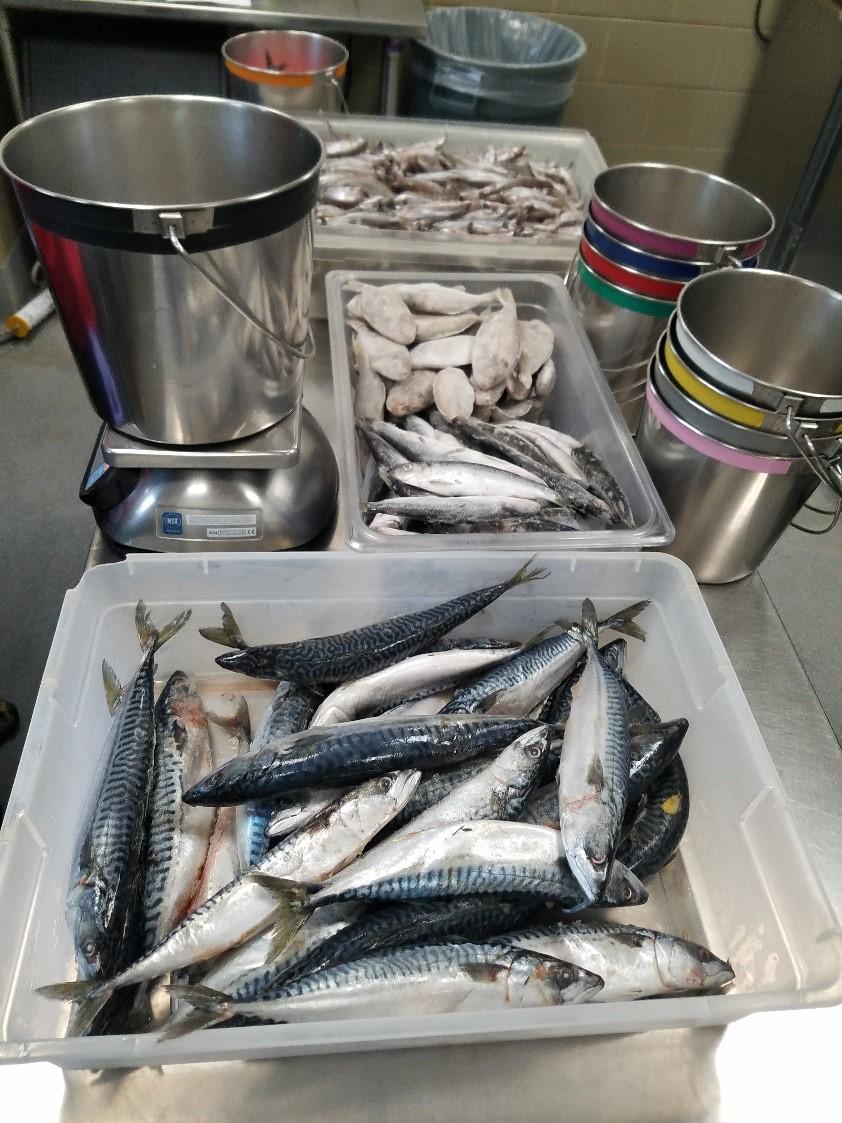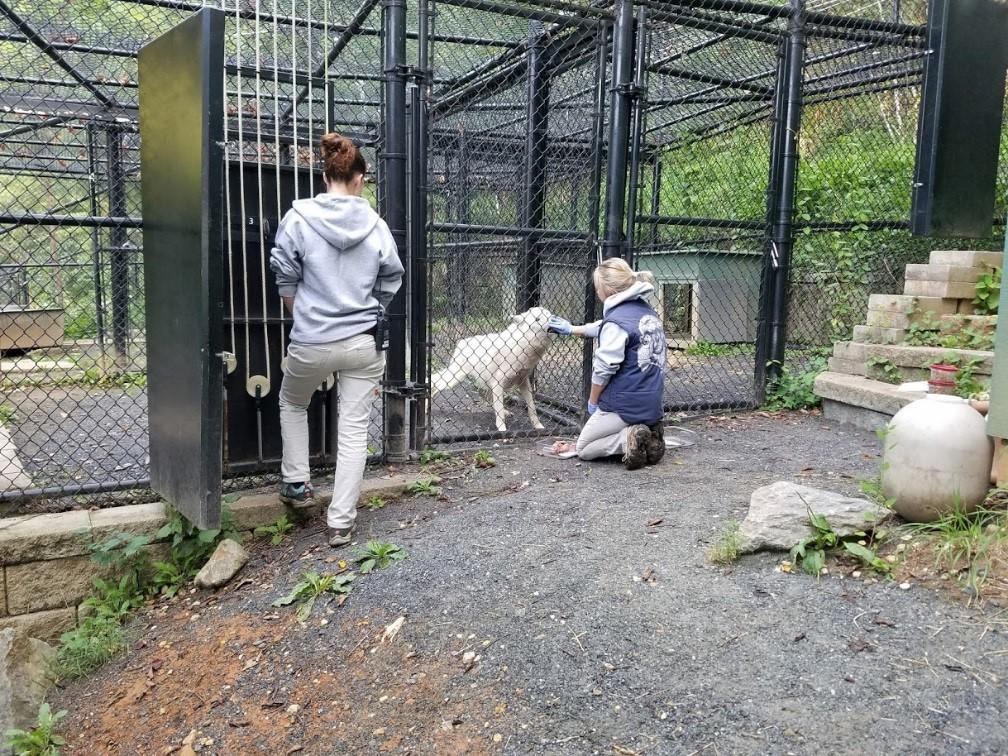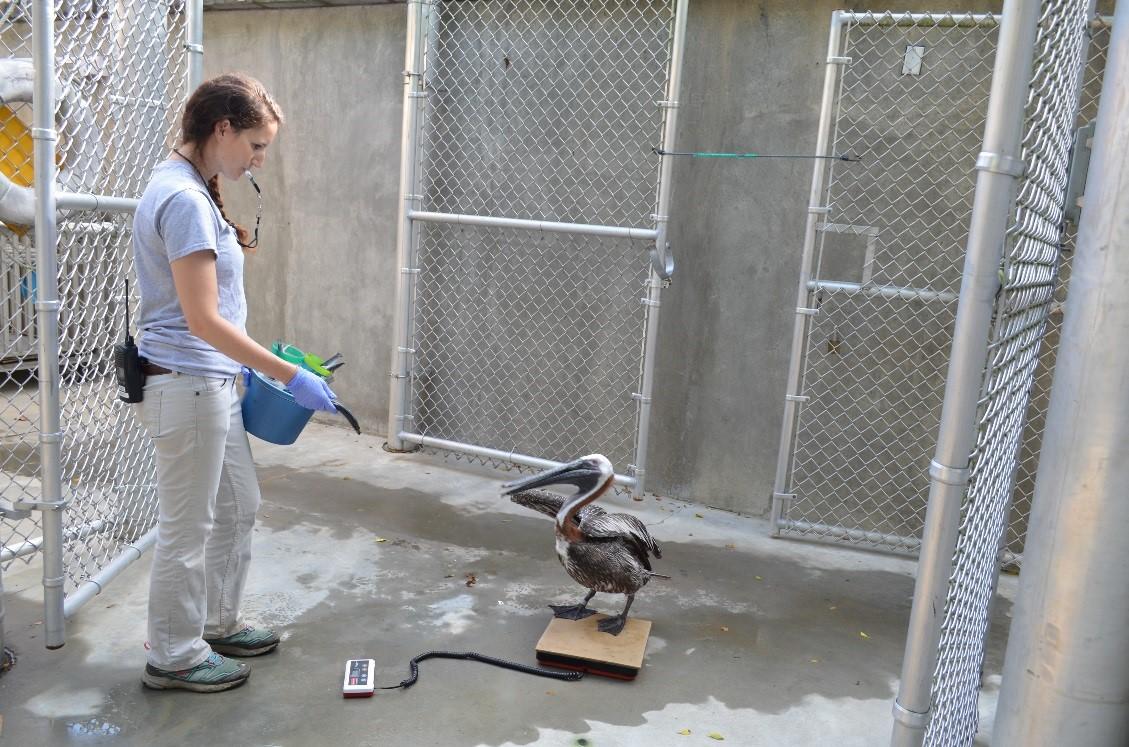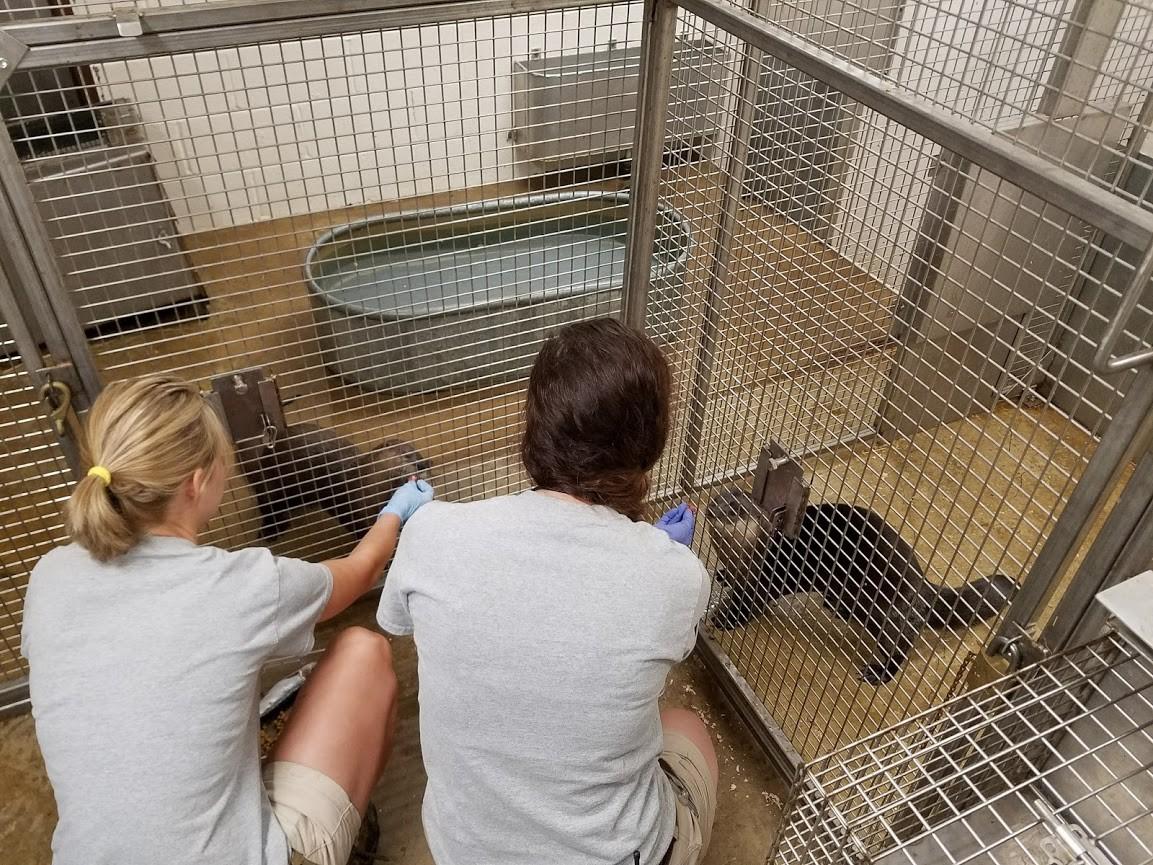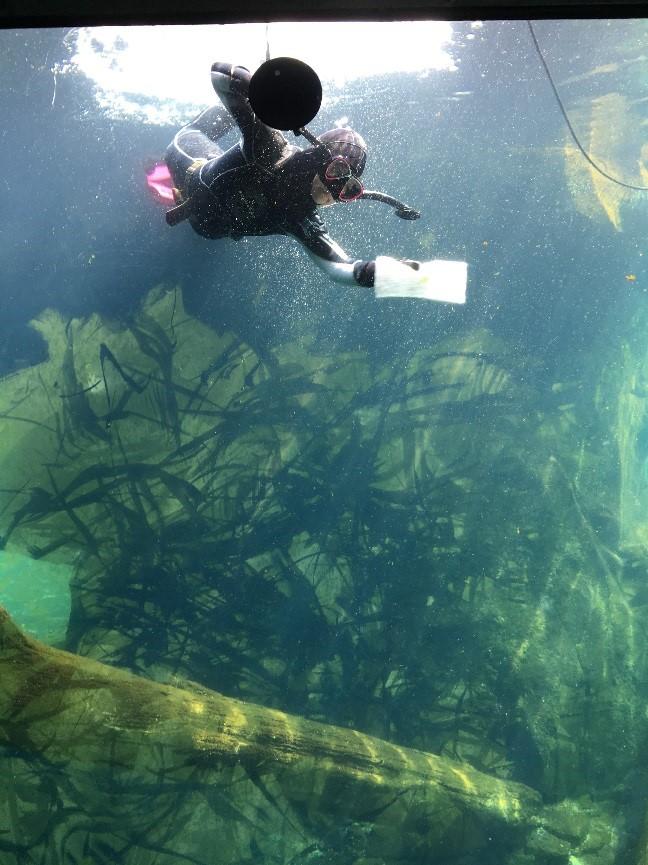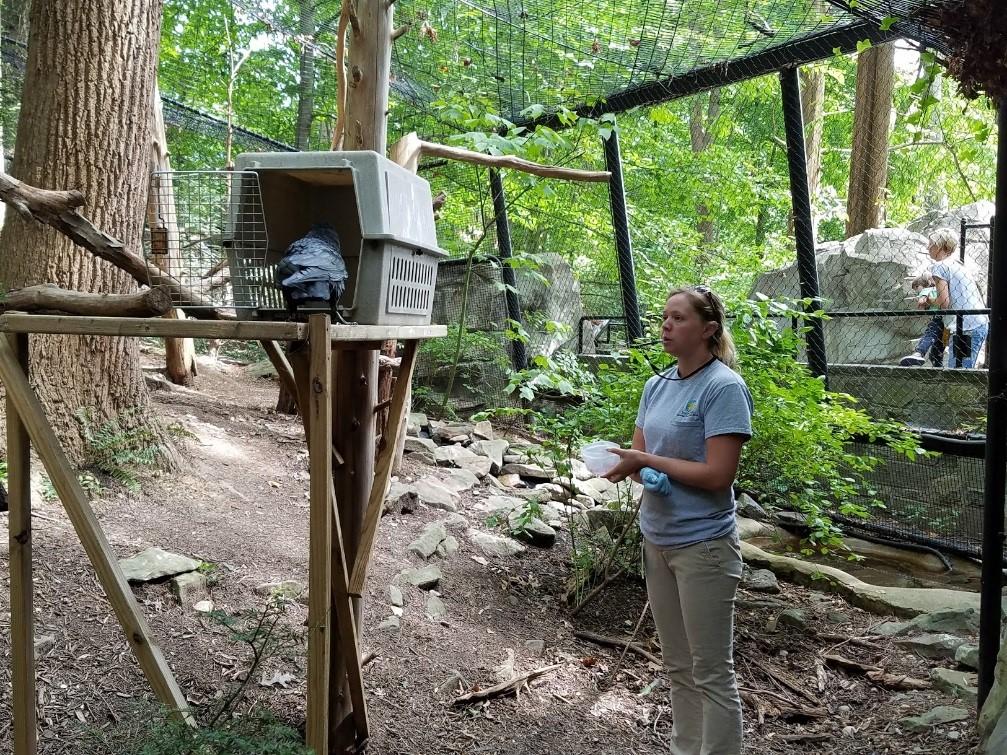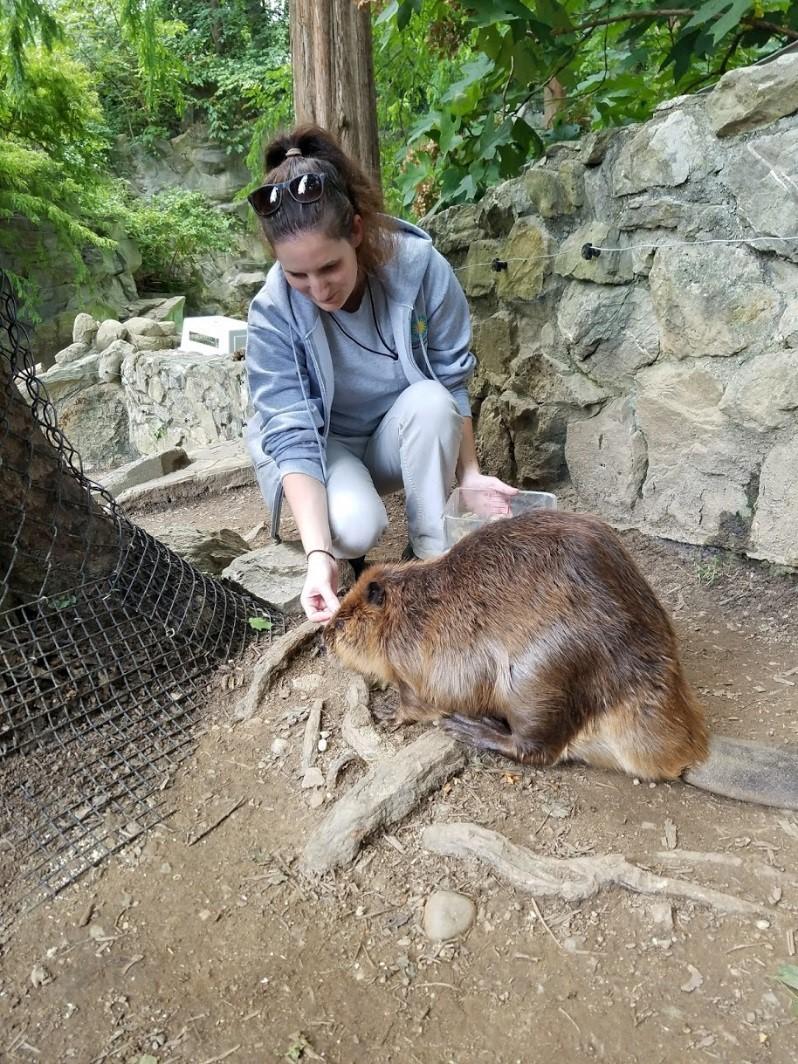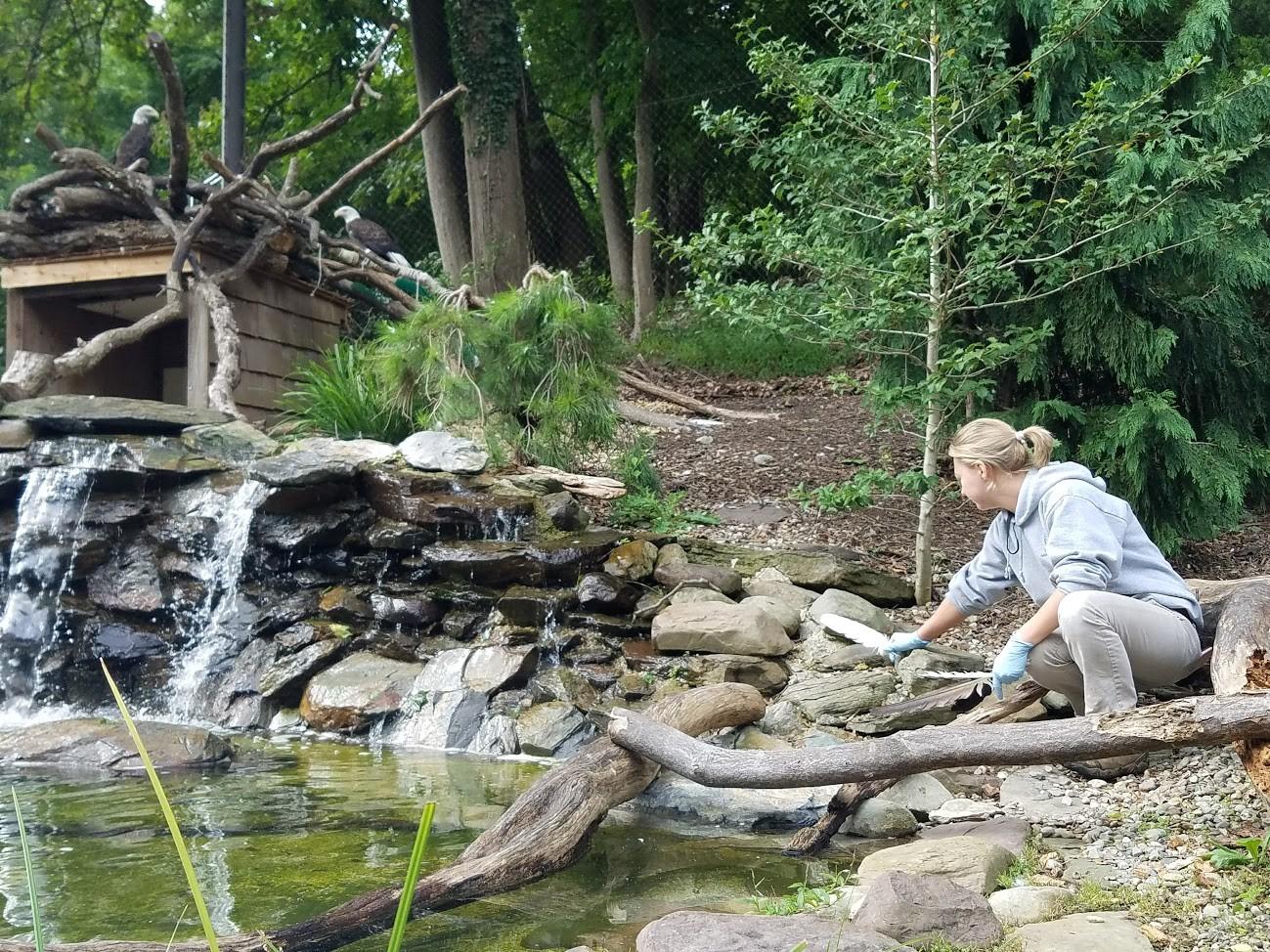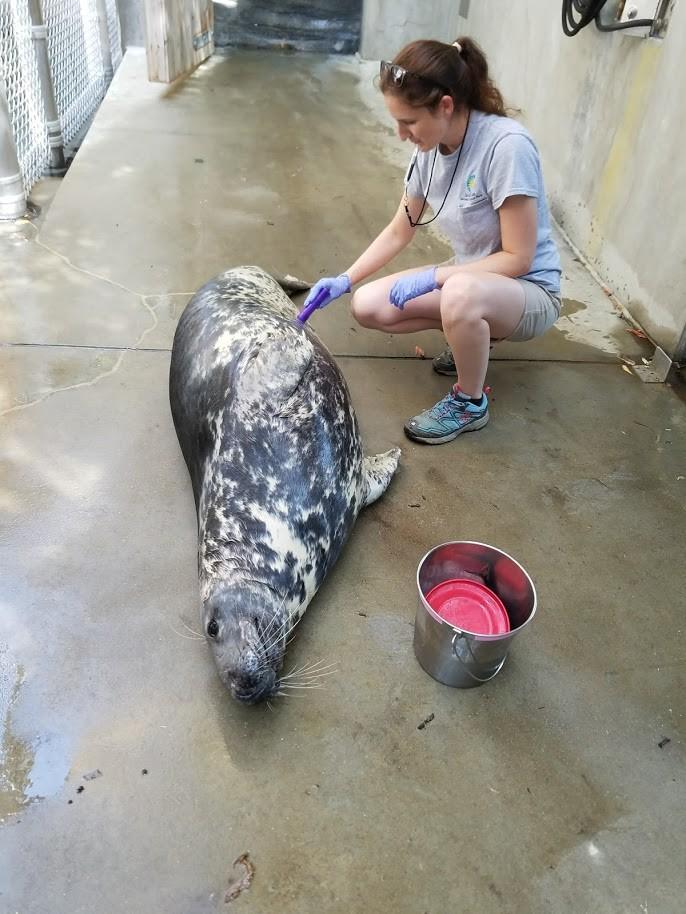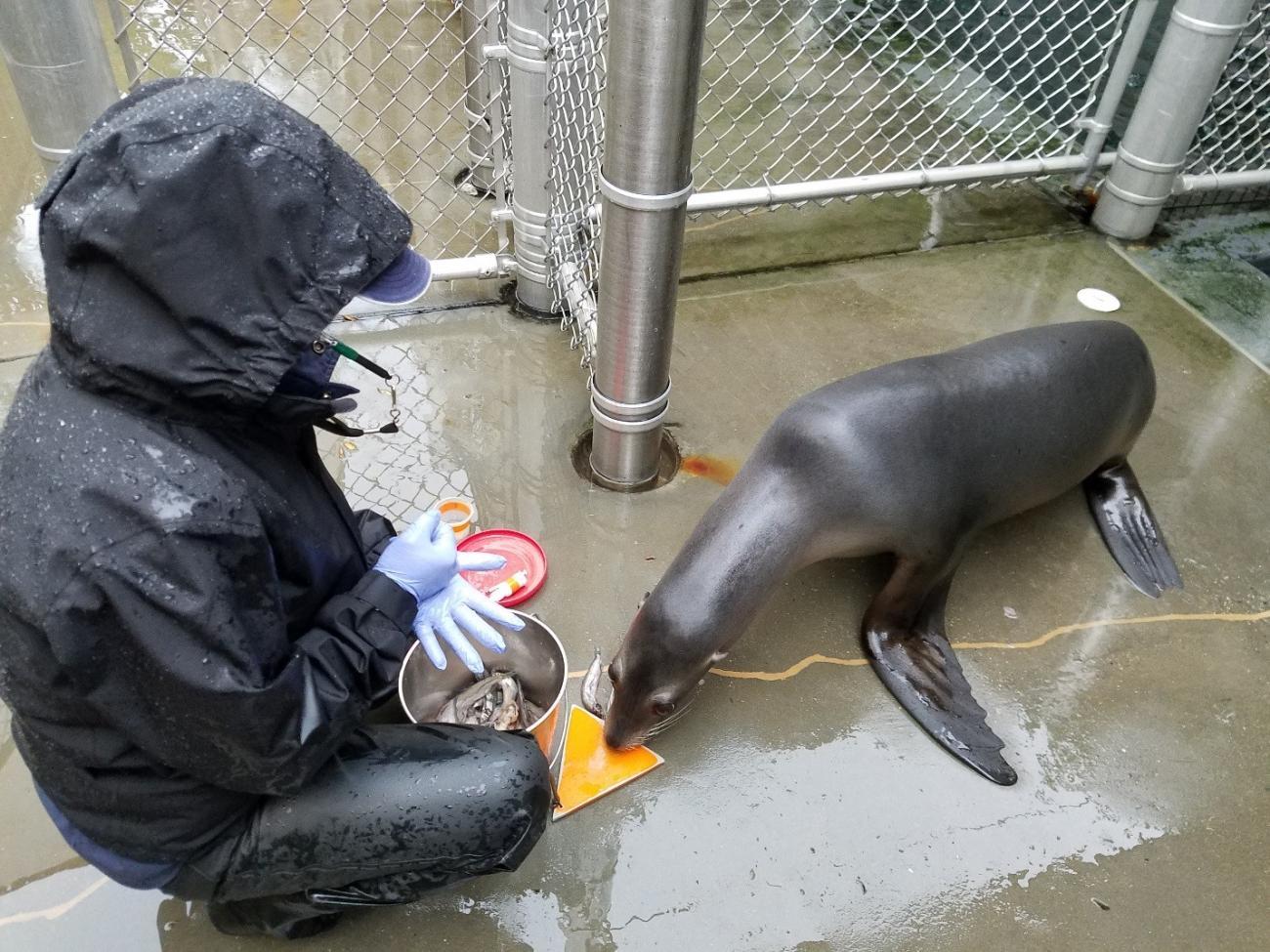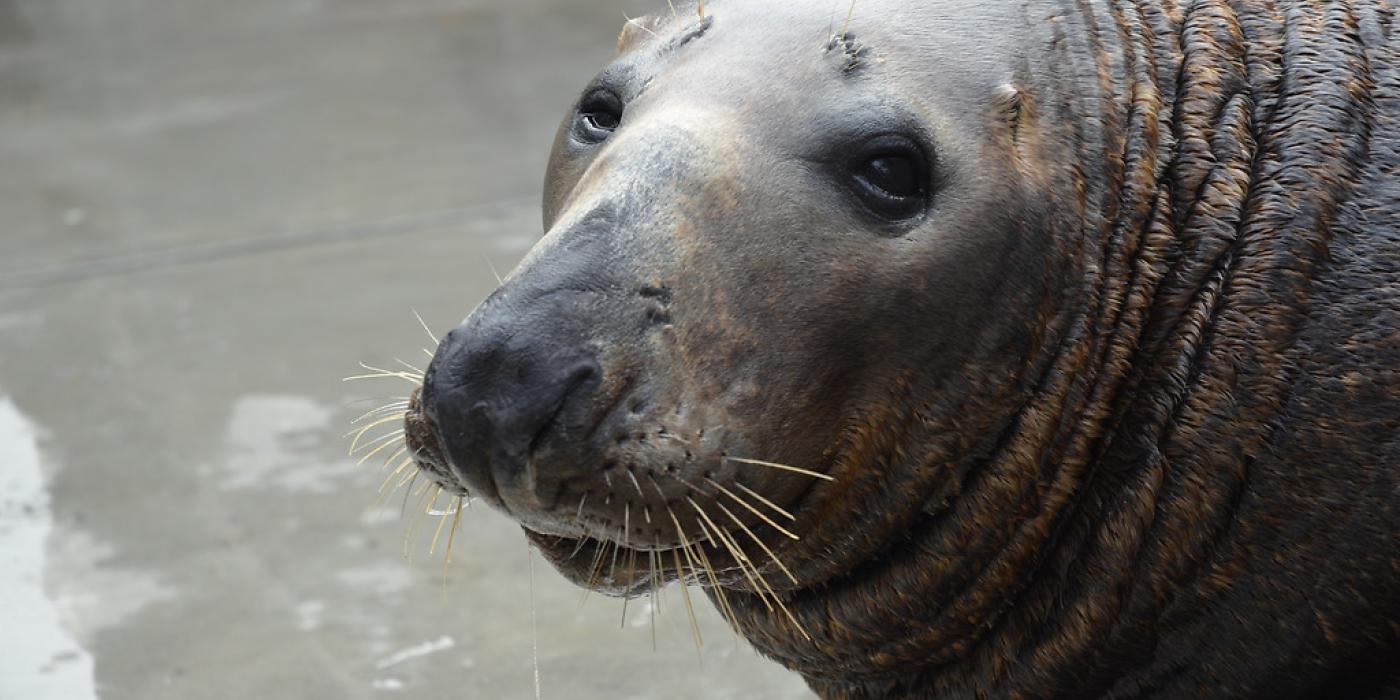A Day in the Life of an American Trail Keeper
A stroll down American Trail brings visitors face-to-face with swimming sea lions, busy beavers and resourceful ravens. What visitors may not see are the dedicated keepers working hard behind the scenes preparing diets, training animals and cleaning habitats. Get a glimpse into a day in the life of animal keepers Allie Killam, Jackie Conrad and Jackie Spicer as they work with charismatic critters that occupy the land, sea and sky of North America.
The first thing we do in the morning is check on all of the animals in our charge. We take a head-count and make sure everyone appears healthy, is moving well and has not sustained any injuries overnight. Our North American beavers—Chipper, Birch and Chloe—are nocturnal by nature. We give them a quick ‘hello’ and try not to disrupt their rest. They usually don’t emerge from the lodge until later in the afternoon. At that time, we will conduct a more thorough body and wellness check.
The sea lions and seals’ diets consist of mackerel, herring, capelin, butterfish and squid. We sort through more than 100 pounds of fish every day with the help of our Friends of the National Zoo (FONZ) volunteer keeper aides. Part of that sorting process is checking that each individual fish is of the highest quality before we feed it to an animal. All of our seafood is sustainably sourced and processed following USDA standards and guidelines.
Every morning, we do a husbandry training session with our gray wolves, Crystal and Coby. Animal keepers throughout the Zoo use positive reinforcement training, which means when keepers ask for a behavior and the animal does the corresponding movement, he or she is rewarded with a treat. For the wolves, that could be a meatball, beef chunk or herring. Like all training sessions, the animals have the option to participate or walk away. In this photo, keepers Allie and Jackie C. are training Crystal to shift. This involves cueing her to move from the main habitat to an enclosure behind the scenes. That way, if we ever need to take the wolves off exhibit for routine yard maintenance or an emergency situation, they will know this cue and be familiar with this space.
Our sea lion colony—Jetty, Calli, Summer, Sidney and Catalina—are fed multiple times a day. Each feeding is an opportunity for us to conduct a thorough body check to make sure they are healthy and look for any injuries, cuts or scrapes that might need veterinary attention. Keepers check every part of the sea lions’ bodies, from nose to tail. In this photo, Jackie C. is asking Jetty to present his front flipper. Once she blows her whistle, Jetty knows that he has done the correct behavior and a tasty fish or squid is coming his way!
Luke, our harbor seal, waits patiently at his station while keeper Allie manipulates his rear flippers. This stimulates the sensation of a blood draw, which is part of the seals’ husbandry training. During physical examinations, Zoo veterinarians will take blood from the seals’ rear flippers. We practice regularly so that the seals acclimate to our touch and are not stressed when it comes time for a vet exam.
Obtaining weekly weights is another way we monitor the health of American Trail’s animals. Everyone is trained to voluntarily step on a scale, including our squadron of brown pelicans: Tinkerbell, Scout, Pappy and Huey. In this photo, keeper Jackie C. is rewarding Tinkerbell, our oldest pelican, with a herring for stepping on the scale. At her last weigh-in, Tinkerbell weighed six pounds. Compare that to Pappy, our adult male, who weighs nine pounds!
North American river otters Emmett and Ashkii participate in a training session behind the scenes with keepers Allie and Jackie C. The otters are asked to stand up and present their paws, among other behaviors. Their rewards range from meatballs to fish.
Our daily sea lion and seal demonstrations are a great way for visitors to check out the animals and gain an appreciation of marine mammal intelligence. In addition to watching our husbandry training techniques and seeing how we assess the animals’ health, visitors can learn how to help conserve and protect marine species in the wild.
We always make sure our habitats are in great shape. Sometimes, that means getting wet! Keeper Allie is scrubbing algae from the sea lion underwater viewing window. She wears a thick wetsuit with gloves and a hood because the pools are kept nice and chilly to mimic the animals’ natural habitat—the Pacific Ocean.
Along with asking our animals to shift off exhibit, some animals are also trained to shift into a crate. We want them to acclimate to the crate in the event that they need to go to the vet hospital or be transferred to another Zoo. Keeper Jackie S. is training Iris, a common raven, to enter the crate. Keepers will often put part of her diet inside to entice her, such as meat, frozen-thawed mice and hardboiled eggs (the ravens’ favorite food). If Iris chooses to enter the crate, she can do so at her own pace.
Now that the beavers are awake and have emerged from the lodge, we conduct full body checks as part of their daily husbandry routine. Here, Jackie C. gets a good look at Chipper while she feeds him rodent chow and veggies (sweet potatoes, carrots and corn on the cob). As an extra-special treat, keepers will give him slices of apple on occasion.
While bald eagles Tioga and Annie look on from their perching, keeper Allie collects their molted feathers. The United States has very specific regulations concerning our national symbol, and molted feathers must be collected and sent to the National Eagle Repository at the Rocky Mountain Arsenal National Wildlife Refuge in Colorado. The repository distributes feathers from bald and golden eagles to Native American nations for religious and cultural purposes.
Ultrasounds are part of the routine care we provide our animals and are especially important when monitoring a pregnancy. We have to be creative with our training. Often, that means finding ways to replicate the tools and instruments used by our veterinary staff. We will often replicate the tools and instruments used by our veterinary staff with recycled materials. For example, we turn cardboard boxes into faux X-Ray machines, use old laptop computers to replicate portable ultrasound machines and modify small traffic cones to simulate gas anesthesia masks. In this photo, gray seal Kara lays on her side while Jackie C. uses an empty deodorant stick to mimic the feel of an ultrasound probe.
Neither rain nor cold can keep a keeper from her duty! We care for the animals 365 days a year, even on weekends and holidays. Whenever the animals are outside, keepers are, too. Even as the rain pours, keeper Allie is suited up in her wet weather gear and training sea lion Sidney.
This story appears in the October 2017 issue of National Zoo News. Enrichment and training allows animals to demonstrate their species-typical behavior, gives them opportunity to exercise control or choice over their environment and enhances their well-being. Learn more about the Zoo’s Animal Enrichment and Training Program.Related Species:

